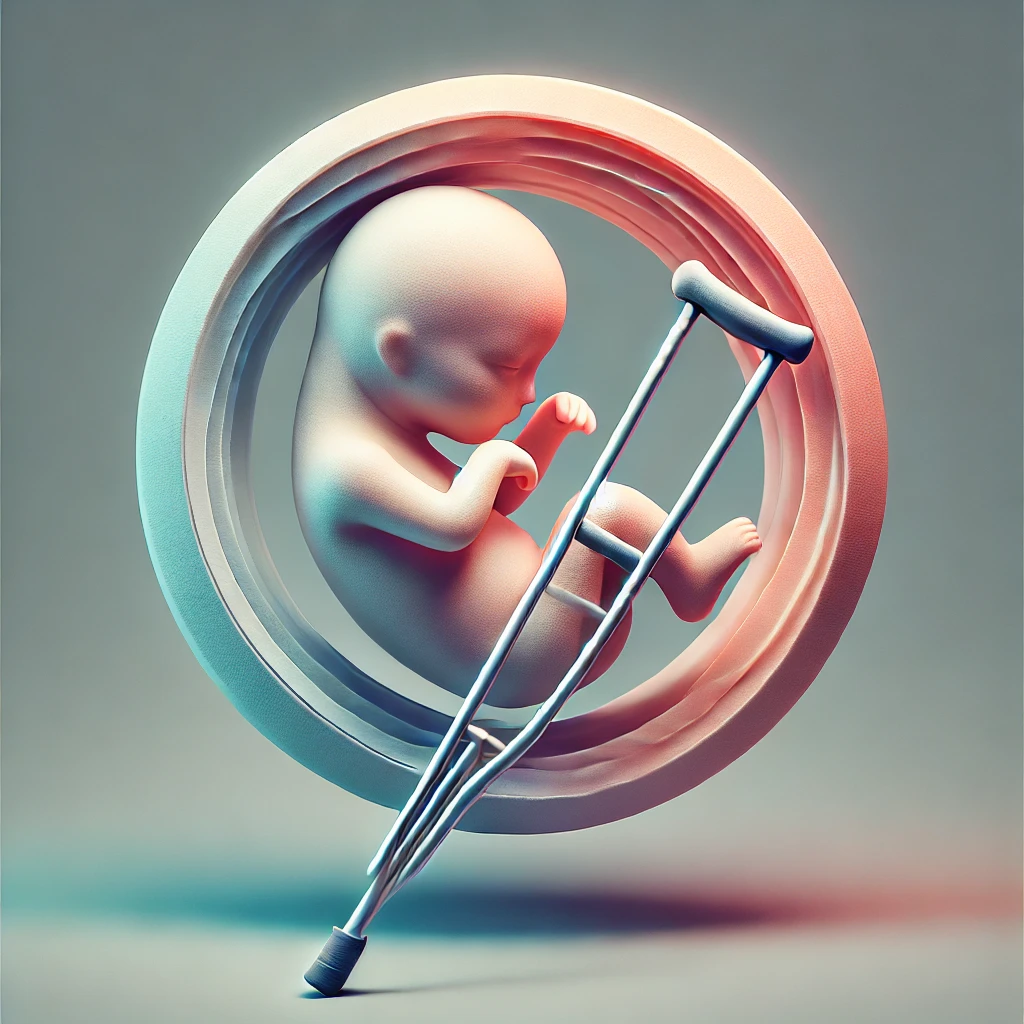Why Emerging Discoveries Demand a Less Linear Approach to Understanding the Effects of Hormonal Contraception
Pre-fertilization. Post-fertilization.
That is how pro-lifers have historically framed discussions around pregnancy, contraception, and abortion.
However, it’s becoming apparent that for hormonal contraception (HC), establishing causation within the traditional pre or post-fertilization paradigm is no longer sufficient.
That’s because research suggests that pre-fertilization effects lead to post-fertilization effects that may cause abortion.
I think a more helpful term is contraceptive related induced proliferative and luteal effects (CRIPLE). I’ve written more about CRIPLE in The Fine-Tuning Argument for Embryo-Endometrial Synchrony.
Traditionally, when people think of pre-fertilization effects with HC, they cite mainly two mechanisms:
- prevention of ovulation
- prevention of fertilization
But this doesn’t always happen using HC. As I’ve covered in The Protestant Pill Problem, one of the main thrusts of this research is to answer the question: what happens when ovulation and fertilization does occur on HC?
As mentioned in Tridecahedrons and the Probability of Abortion While Using Hormonal Contraception, it’s likely based on research data that a woman on the the mini-pill has a 1 in 13 chance of an abortion every cycle, with similar probabilities for the progesterone-only implant and IUD.
You’ve been told repeatedly that hormonal contraception only has pre-fertilization effects, and that any post-fertilization effects are theoretical.
After reading the studies, I’m not so sure.
The role of progesterone during the follicular stage seems to have a previously underrated role in the proper development of the follicle, the transition to sufficient luteal phase progesterone production, and successful nidation and gestation.
The Pre-Fertilization Role of Progesterone
In “Novel aspects of the endocrinology of the menstrual cycle,” the authors highlight the importance of progesterone not only in the luteal phase, but in the follicular phase as well.
“The two principal steroids secreted by the ovaries are oestradiol, in the follicular phase, and progesterone, in the luteal phase. Nevertheless, the role of each is not confined to certain stages of the menstrual cycle, and they are important regulators of gonadotrophin secretion throughout the whole cycle.” (emphasis mine)
“This suggests that progesterone, besides oestradiol, is another ovarian factor that sensitizes the pituitary to GnRH. It is likely, therefore, that the occurrence of the endogenous LH surge at midcycle is the result of the interplay between three determinants: oestradiol and progesterone, which sensitize the pituitary to GnRH, and GnSAF, which antagonizes this effect. The LH surge is, therefore, the result of the balanced action of these substances.” (emphasis mine)
“…progesterone activity in the hypothalamus during the follicular phase of the cycle and at midcycle seems to contribute to the sensitizing action of oestradiol on the pituitary and to the occurrence of the LH surge.” (emphasis mine)
“It is interesting that progesterone has an endocrine role during the follicular phase of the cycle and participates both in the negative and the positive feedback mechanisms.”1 (Messinis, Messini, and Dafopoulos, 2014) (emphasis mine)
In “Progesterone-Regulated Endometrial Factors Controlling Implantation,” the authors conclude:
“…several P [progesterone]-regulated pathways involved in endometrial function during implantation are conserved in mice and humans. Dysregulated P signaling has been implicated not only in recurrent miscarriage and infertility, but also in other reproductive pathologies, such as endometriosis and endometrial cancer.”2 (Bhurke, Bagshi, and Bagchi, 2016) (emphasis mine)
Dysregulated Progesterone Signaling, Blunted LH Peak, and and Luteal Phase Deficiency
One of the biggest challenges for the IVF community is luteal phase defect. Prior to the addition of luteal phase support protocols, this was likely a leading cause of failure. Even with the addition of luteal phase support (progesterone supplementation), IVF success rates still remain low.
One of the mechanisms of action of emergency contraception (EC) is to prevent the luteinizing hormone (LH) peak that leads to ovulation. But sometimes the LH rise is blunted and ovulation still occurs. A blunted LH surge/peak leading to luteal phase deficiency is disastrous for pregnancy.
With abortion pills and EC pills in the news, it’s a good time to point out that birth control pills also lead to dysregulated progesterone and LH profiles.
In “Systematic Review of Ovarian Activity and Potential for Embryo Formation and Loss during the Use of Hormonal Contraception,” the authors describe how HC can cause dysfunctional ovulation with accompanied lack of or blunted LH peak.
Their aim was to “estimate the frequency of luteal-phase endocrinological disruption, which might be sufficient to cause postfertilization effects and excess embryo loss, in women using hormonal contraception.”3 (Harrison et al., 2018)
“Blunted LH secretion is characteristic of cycles studied during the use of various hormonal contraceptives (Endrikat et al. 2013; van Heusden, Coelingh Bennink, and Fauser 2002; Pierson et al. 2003; Seidman et al. 2015; Kroll et al. 2015).” (emphasis mine)
“Since it is LH stimulation of granulosa cells which results in luteinization and subsequent progesterone production, the amount and timing of the LH surge is critically important to achieving sufficient progesterone production during the luteal phase. Follicular rupture with ovum release which has been triggered by a blunted LH peak would result in luteinization of fewer granulosa cells, in turn resulting in deficient postovulatory progesterone production.” (emphasis mine)
“The impact of dysfunctional ovulation with low luteal progesterone production on embryo survival has been documented by multiple infertility researchers (Lawrenz et al. 2018; Devoto et al. 2009; Ozlu et al. 2012; Arce et al. 2011; Andersen and Andersen 2014; Kaur and Gupta 2016; Achache and Revel 2006). Although there is no current consensus on an absolute minimum level of midluteal progesterone needed for embryo survival, low levels of midluteal serum progesterone are associated with excess embryo loss (Arce et al. 2011).” (emphasis mine)
“Since progesterone mediates most of the genomic changes in the endometrium that are obligatory for implantation and placentation (Lawrenz et al. 2018; Achache and Revel 2006; Riesewijk et al. 2003), inadequate or mistimed progesterone production leads to an endometrial environment which is less receptive and which decreases the likelihood of embryo implantation and survival. Interference with progesterone-dependent blastocyst adhesion and other steroid-dependent changes which are markers for endometrial receptivity is a recognized mechanism for ‘an interceptive approach to prevent embryo implantation’ (Riesewijk et al. 2003). Such interference could result either from the direct actions of progestins on the endometrium and/or disruption of the timing or amount of luteal progesterone in relationship to follicle rupture.” (emphasis mine)
“In our review, ovulatory-sized follicles (>13 mm) with inadequate luteal-phase progesterone levels comprises the most commonly observed type of ovarian activity during the use of hormonal contraceptives” (emphasis mine)
“The present study suggests, however, that follicular rupture followed by inadequate luteal-phase progesterone production with decreased embryo survival may be the most common scenario following follicular rupture and egg release.” (Harrison et al., 2018) (emphasis mine)
In other words, luteal phase deficiency may be the norm after ovulation when using birth control. And that’s not good for Protestant hedged contraceptionists using the mini-pill with ovulation rates around 50% (or more).
Some have conjectured that in the event of conception while on the pill, the formation of a corpus luteum will somehow re-synchornize hormone levels to an acceptable state ending in a normal healthy pregnancy. I’ve previously covered why this is unlikely based on the requirement for ongoing embryo-endometrial synchrony.
According to the research, pre-fertilization effects of HC affect embryo development and can lead to post-fertilization luteal phase deficiency leading to pregnancy loss.
Is that abortion caused by a pre-fertilization effect or a post-fertilization effect?
I’m suggesting that’s the wrong question.
The question should be, “Based on available research, does HC cause CRIPLE that can lead to abortion?”
If the answer is yes, then Protestants and Evangelicals need to re-evaluate their equivocation on the pill.
- Messinis, I. E., Messini, C. I., & Dafopoulos, K. (2014). Novel aspects of the endocrinology of the menstrual cycle. Reproductive biomedicine online, 28(6), 714–722. https://doi.org/10.1016/j.rbmo.2014.02.003 ↩︎
- Bhurke, A. S., Bagchi, I. C., & Bagchi, M. K. (2016). Progesterone-Regulated Endometrial Factors Controlling Implantation. American journal of reproductive immunology (New York, N.Y. : 1989), 75(3), 237–245. https://doi.org/10.1111/aji.12473 ↩︎
- Harrison, D., Buskmiller, C., Chireau, M., Ruppersberger, L. A., & Yeung, P. P., Jr (2018). Systematic Review of Ovarian Activity and Potential for Embryo Formation and Loss during the Use of Hormonal Contraception. The Linacre quarterly, 85(4), 453–469. https://doi.org/10.1177/0024363918815611 ↩︎

